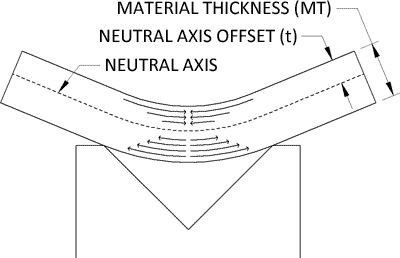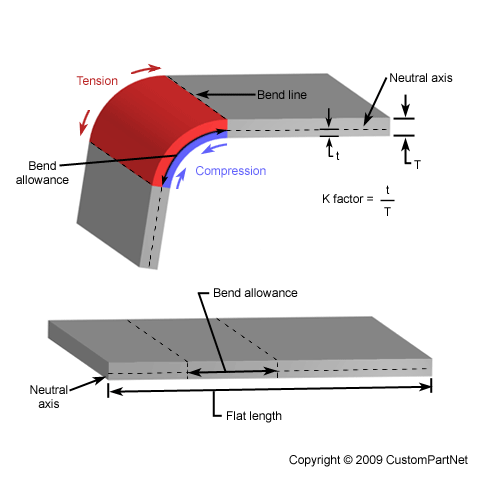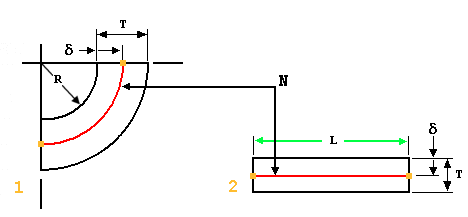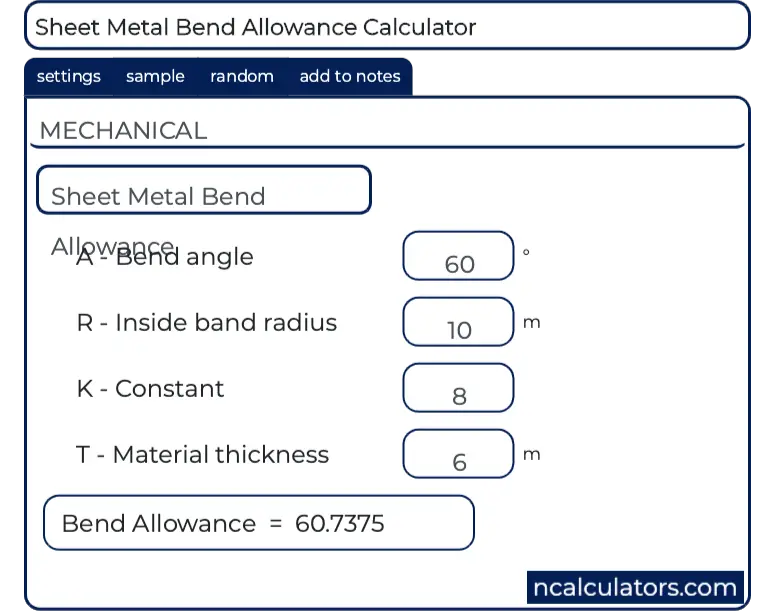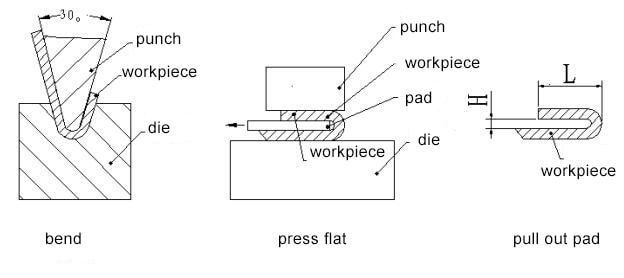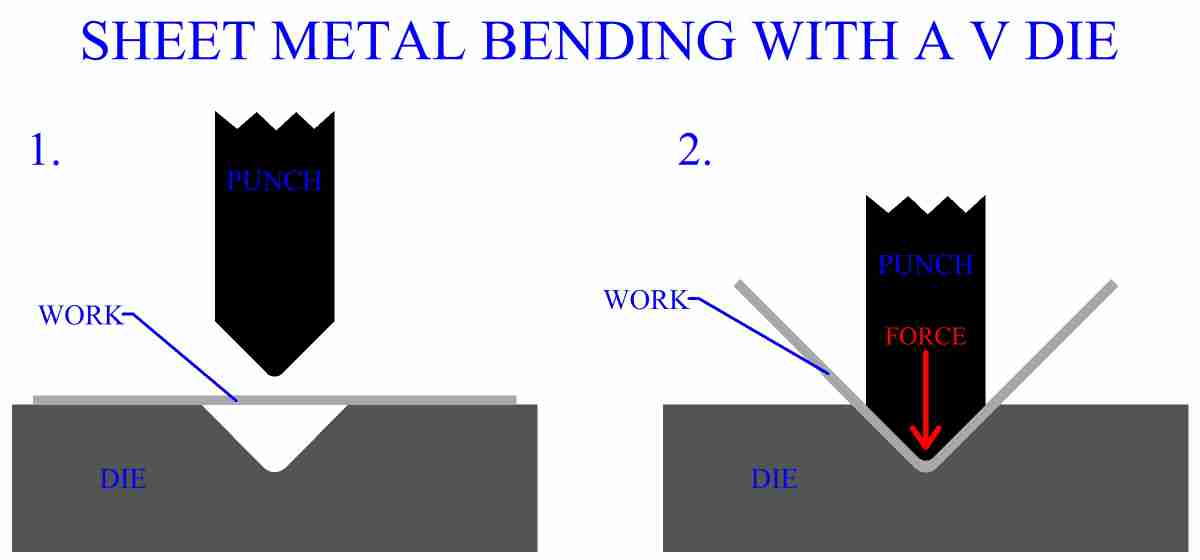Sheet Metal Bend Relief Formula

When sheet metal makes a transition from a bend to a flat surface or to another bend it tends to rip and tear.
Sheet metal bend relief formula. 60 90 and 120 and we will calculate k factor bend allowance and bend deduction for them. The diagram shows one such mechanism. The material thickness will be measured in decimal form not by the gauge number. The following illustration shows the equation calculation for determining the bend allowance when forming sheet metal.
The bend allowance formula takes into account the geometries of bending and the properties of your metal to determine the bend allowance. To eliminate this a bend relief is added so the edge of the sheet metal is perpendicular to the bend. Refer to the chart for values for folder as well as various press brake tooling combinations. Most sheet metal materials will conform to the calculations.
Therefore the bend allowance added to the flange lengths is equal to the total flat length. The bend deduction sometimes called the bend compensation describes how much the outside of the sheet has been stretched. D 2 5t r see below the height can be less but it required secondary operations and is far more costly. Geometry of tooling imposes a minimum bend dimension.
5 edge distortion an exaggerated example of edge deformation is pictured in figure a below. This page also includes a link to a on line sheet metal bend allowance calculator. We are going to review three bending scenarios with three different bending angles. You will need to know your material thickness mt the bend angle b the inside radius ir and the k factor k.
Consider a sheet with a 20 mm thickness and a length of 300 mm as shown in figure 1. For bends over 165 there is no need to calculate bend allowances as the neutral axis stays pretty much in the middle of the detail. ß bending angle for bends between 90 and 165 degrees the formula is. Use the minimum bend dimension values in the charts below for your minimum closeness of cutout to a bend.
In general a minimum bend relief is equal to the material thickness plus the inside bend radius. The bend allowance describes the length of the neutral axis between the bend lines or in other words the arc length of the bend.





